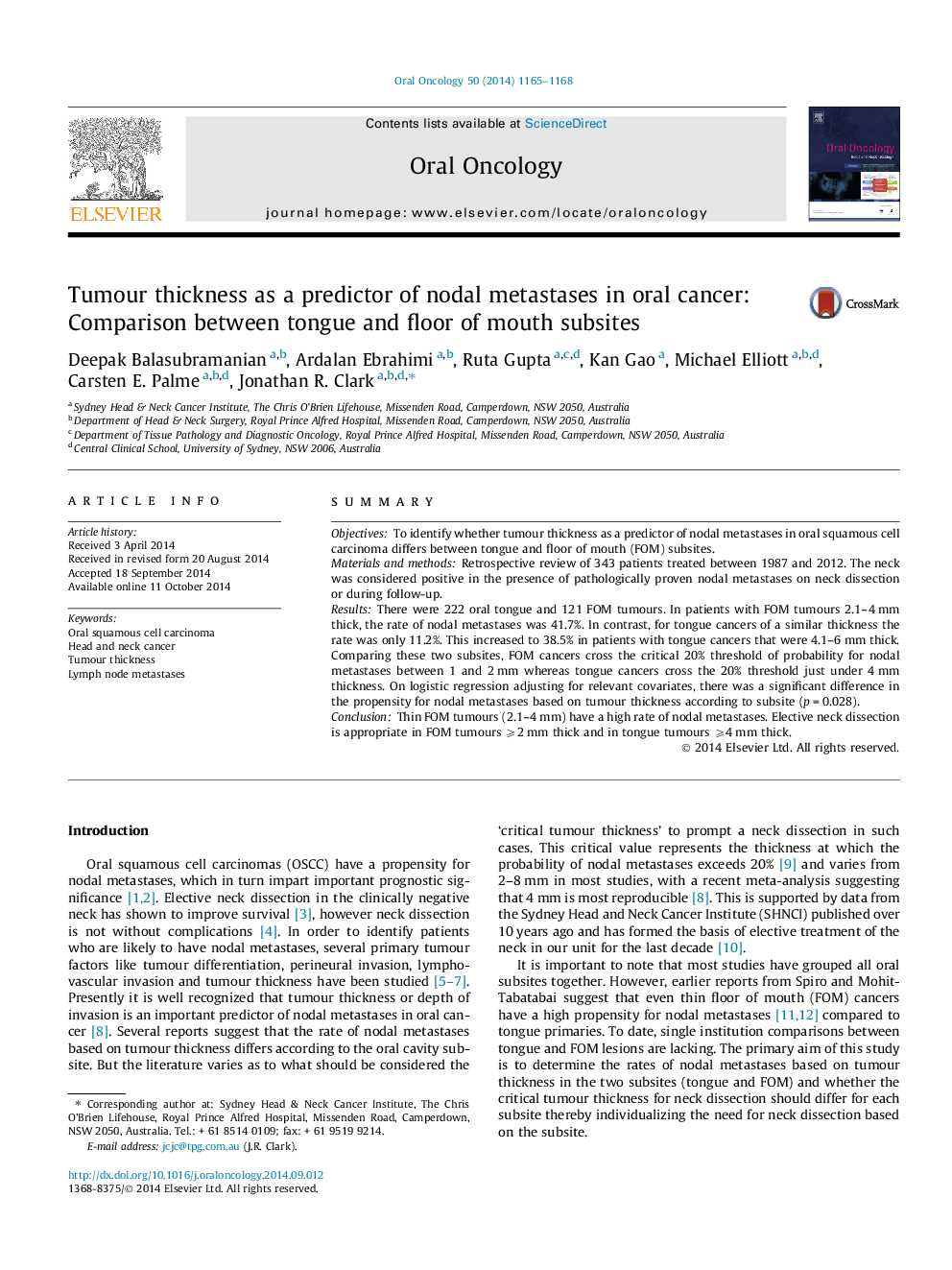| Article ID | Journal | Published Year | Pages | File Type |
|---|---|---|---|---|
| 3163946 | Oral Oncology | 2014 | 4 Pages |
SummaryObjectivesTo identify whether tumour thickness as a predictor of nodal metastases in oral squamous cell carcinoma differs between tongue and floor of mouth (FOM) subsites.Materials and methodsRetrospective review of 343 patients treated between 1987 and 2012. The neck was considered positive in the presence of pathologically proven nodal metastases on neck dissection or during follow-up.ResultsThere were 222 oral tongue and 121 FOM tumours. In patients with FOM tumours 2.1–4 mm thick, the rate of nodal metastases was 41.7%. In contrast, for tongue cancers of a similar thickness the rate was only 11.2%. This increased to 38.5% in patients with tongue cancers that were 4.1–6 mm thick. Comparing these two subsites, FOM cancers cross the critical 20% threshold of probability for nodal metastases between 1 and 2 mm whereas tongue cancers cross the 20% threshold just under 4 mm thickness. On logistic regression adjusting for relevant covariates, there was a significant difference in the propensity for nodal metastases based on tumour thickness according to subsite (p = 0.028).ConclusionThin FOM tumours (2.1–4 mm) have a high rate of nodal metastases. Elective neck dissection is appropriate in FOM tumours ⩾2 mm thick and in tongue tumours ⩾4 mm thick.
